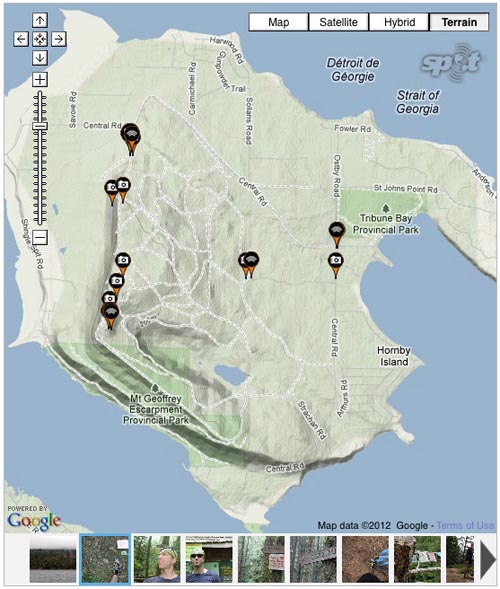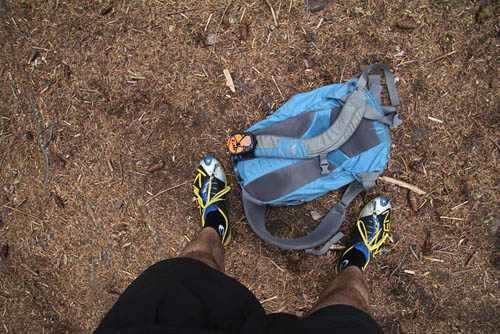Hornby Island is a dot of land in British Columbia’s inside passage, a misty and green place quiet and secluded a couple miles offshore from Vancouver Island. Access is via two ferry trips, and once you’re there the pace of life slows down immediately. It’s a sleepy place with rolling waves, foggy beaches, and enchanted forests cloaked verdant green with moss, ferns, and towering pine trees that fade above into the gray.

This fall, on a trip through British Columbia, I spent three days on Hornby. I got up early one morning to do a solo trail run across the island’s wild west side and through Mount Geoffrey Regional Nature Park. My goal was the summit of the park’s eponymous mountain peak, the 1,080-foot Mount Geoffrey.
The mountain is the highest point on Hornby, and it’s accessed via the aptly-named “Cliff Trail,” which parallels the immense cliffy bluffs guarding the western edge of the island. As the sun dipped behind a wall of clouds, I took off for a run on the Cliff Trail with my SPOT device, a couple energy gels, water, a compass, and a lightweight shell in anticipation of the island’s common rain.

My map, a freebie snagged from the lobby at our cabin resort, was rudimentary. With an infusion of new mountain-biking trails in the park, I ran off the map and found myself lost more than once. At a trail intersection, I leaned back to read an unexpected sign: “4 Dead Aliens,” it foretold.
There was not another soul in the misty woods above the ocean. The run — a 5-mile route end to end — was quiet and serene, the moist air, soft forest floor, and mass of vegetation absorbing all noise. The animals on Hornby are quiet even.









